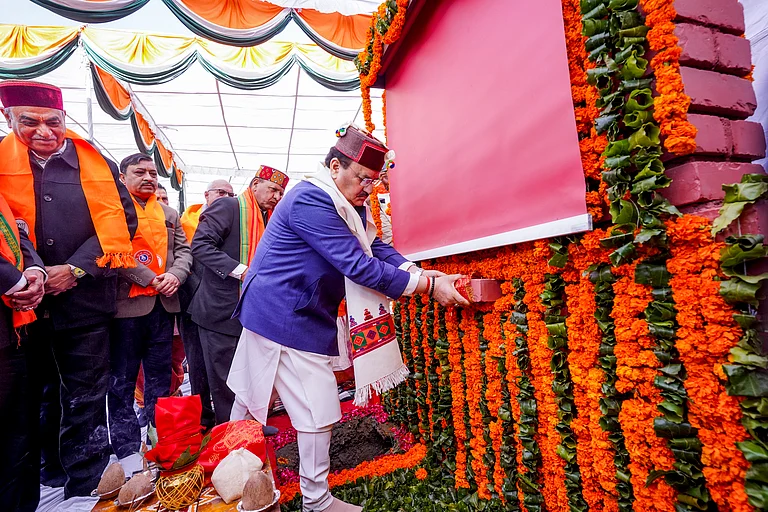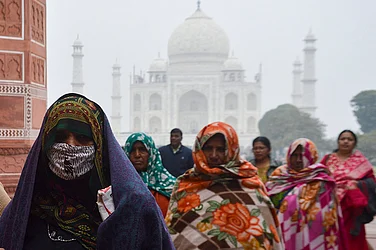Kerala has set the ball rolling in finding common ground for states on the question of Central tax devolution with a Conclave of Finance Ministers at Thiruvananthapuram on the 16th Finance Commission (FC). Karnataka Chief Minister Siddaramaiah has written to other Chief Ministers to take a common stand and is going to organise another get-together of likeminded states. Tamil Nadu and some other states are also likely to follow the suit. So far, the reaction to the 16th FC has been muted. But that will not be the case in the days to come.
The conclave at Thiruvananthapuram was attended by Bhatti Vikramarka Mallu (Deputy Chief Minister, Telangana), Krishna Byre Gowda (Revenue Minister, Karnataka), Sardar Harpal Singh Cheema (Finance Minister, Punjab), Thangam Thennarasu (Finance Minister, Tamil Nadu) besides Pinarayi Vijayan (Chief Minister Kerala) and K.N. Balagopal (Finance Minister, Kerala). Two dozen academics such as Arvind Subramanian (Former Economic Advisor), M. Govinda Rao (Member, 14th FC), D.K. Srivastava (Member, 12th FC), Pinaki Chakraborty (NIPFP) and Jayati Gosh also participated.
The FCs undertake two tasks. One, they determine the share of the Union tax collection to be devolved to the states for the next five years. This amount to be divided among the states is known as the divisible pool. Two, they determine the principles of distribution of the divisible pool among the different states.
Cheating The States
All states share a common objective of enlarging the divisible pool. The 14th FC took an unprecedented decision to raise the divisible pool from 32 per cent of the net central taxes to 42 per cent. Although the 15th FC was asked by the central government via its Terms of Reference (ToR) to review the enhancement, it chose not to reduce the divisible pool because of Covid conditions and protest by states.
But the states are aggrieved that the central government cheated them by resorting to resource mobilisation through cess and surcharge which constitutionally do not need to be shared with the states. As a proportion of gross tax revenues of the Centre, surcharges and cesses have jumped from 9.5 per cent (in 2011-’12) to 20.2 per cent (in 2020-’21) even after excluding GST compensation cess. In 2023-’24 the ratio was 14.4 per cent. Consequently, between 2015-’16 and 2018-’19 the states lost, due to the shrinking of the divisible pool, a shocking ₹5,26,747 crore. This translates to an average of about 3 per cent of the Gross Domestic Product at current prices.
The 16th FC And Divisible Pool
The ToR of 16th FC skirted controversy by strictly confining to the Constitutional provisions for the FCs and avoiding references in the ToR of 15th FC, including ‘reviewing’ of 42 per cent divisible pool. If off-the-cuff remarks of the Chairman of 16th FC in some of the discussions with state governments are to be believed, he seems to have suo moto taken up the case for reducing the divisible pool.
A point has been raised that the Central government's continuously high revenue deficit is because of unrealistically high devolution. Wrong. It is the outcome of irresponsible tax breaks given to corporates, arbitrary reductions in the revenue neutral GST rate, and refusal to increase the tax on super rich. At the same time, the Centrally-sponsored programmes on subjects within the state domains and discretionary transfers to its politically-aligned states have been expanded.
The Planning Commission was abolished and replaced by the Niti Ayog, an advisory thinktank which had no resource allocation function. The revenue resources once allocated by the Planning Commission now became available to the Union Finance Ministry for discretionary allocation. The NDA slogan of ‘double engine government’ virtually declares that if voters elect a BJP state government, that state would receive special fiscal support from the Centre.
Why 50% Divisible Pool?
The conclusion is very clear—the Central government's revenue deficit is its own making. And it has been demonstrated that at least 49 per cent of the Central taxes will have to be devolved if the vertical fiscal imbalance between the Centre and states is to be eliminated. So, the 50-per-cent divisible pool has become a slogan of all states, even those who were not represented at the Conclave. Narendra Modi, while he was the Chief Minister of Gujarat, had vigorously campaigned for a divisible pool of 50 per cent of the Central taxes. He switched views only after he became the Prime Minister.
Every state government so far has included this demand in their memorandum to the 16th FC. All states may not be willing to join in a common memorandum, but the majority of the states can be rallied together for a common memorandum on this demand. This would be the first time in Indian fiscal history that the states present a joint memorandum. Even if FC does not approve an enhancement, it is possible to prevent any reduction in the divisible pool and restrain the Centre from cheating the states through cess and surcharge route.
Squeezing The Fiscal Space
There is yet another common cause that can rally all the states together. It has become customary for FCs to suggest ‘sound’ fiscal measures to achieve fiscal consolidation for the states. It was generally feared that the 15th FC would be used as an instrument to coerce the states to accept the recommendations of FRBM Review Committee, whose Chairman N.K. Singh was also the Chairman of the FC. The FRBM Review Committee had recommended a ceiling of 60 per cent of combined debt to GDP ratio of the Centre and states, with 40 per cent limit for the Centre and 20 per cent for the state governments. The fiscal deficit targets recommended for the Centre and states were 2.5 and 1.7 per cent of GDP instead of the current 3 per cent.
The above recommendations reflect an extremely conservative fiscal view that denigrates the role of the state in the development process. Implementation of the above recommendations will severely abridge the fiscal space of the state governments and drastically erode its capital expenditure on infrastructure development.
The Asymmetry Between Centre and States
An important point to be noted is that the experience so far is that unlike the states, the Centre has not complied with the existing FRBM-Act-prescribed revenue deficit and fiscal deficit targets. This asymmetry would severely and differentially squeeze the borrowing capacity of only the state governments. The state governments were saved from such a dire predicament only because Covid-19 intervened. The period of recession was no appropriate time point to reduce the fiscal deficit. Once again, Prof. Aravind Panagariya's team is likely to revive FRBM Review Committee.
The asymmetry is even more sharp in the case of off-budget borrowings. The Centre has pushed Kerala into a serious fiscal crisis by redefining off budget borrowing, even on an annuity payment model capital expenditure, by including it in the fiscal deficit of the state with retrospective effect. In contrast Centre has continued its off-budget borrowing and even fudging the off-budget borrowing statement included in the annexure to budget.
The Grievance Of The Advanced States
The unity among the states would end with the above possible fiscal moves by the FC which would affect all states adversely. The states would necessarily part ways once the question of inter-se distribution is taken up. The share of all the states represented in the Thiruvananthapuram Conclave had declined; and for some, the decline in the Centre devolution was so sharp as to disrupt their fiscal balance.
Equity has been and should be an important factor in determining inter-se distribution. The advanced states contribute a major portion of the central government tax resources. A portion of these resources would have to be transferred to less developed states through central government devolution so that they may catch up and provide minimum and equal basic services to the citizens. But the problem is that the backward states have not been catching up and every FC is forced to redistribute higher amounts to the determent of the growth in the advanced states.
Widening Regional Inequality
If we compare the ratio of per capita income of different states between 1981 and 2021, a startling pattern emerges. The ratio of state per capita income to national average per capita income of almost all the backward states slip down. For example, Bihar slips from 56 to 29, UP from 78 to 42, MP from 83 to 71 and Odisha from 81 to 71. Rajasthan marginally improved from 75 to 79. In contrast, the ratio of per capita income of almost all advanced states improves with respect to national average per capita income. For example, Haryana rises from 145 to 157, Karnataka from 93 to 151, TN from 92 to 143, Gujarat from 119 to 142 and Kerala from 93 to 133. AP and Maharashtra are currently above the national average but have been slipping.
Punjab has been one of the original advanced states, but its per capita income ratio has sharply declined while Assam has sharply improved. If we remove these outliers, the trajectories of growth of advanced and backward states would assume a funnel-like picture of widening inequality.
The above being the distinct growth experience of different states, it is inevitable that more and more resources would have to be redistributed from the advanced states to the backward states. For example, the southern states' share in the divisible pool during the 11th FC was 21.1 per cent. It declined to 15.8 per cent during the 15th FC. Every one of the ministers in their presentations recounted the fiscal strains and crisis created by the decline in Central devolution. How to stem this disruptive decline while still adhering to the principle of equity was a key question in the deliberations of the Conclave.
Need to Consider Relative Resource Contribution
A solution proposed by Dr. Arvind Subramanian in his presentation and was keenly debated. The present formula of distribution revolving around population shares and per capita income, in the context of widening regional inequality, would result in further disruptive reduction in the share of advanced states in central devolution.
There is no point in tinkering around this population-per capita income formula. It can be resolved by introducing a factor to give due weightage for resource generation capacity of different states into the devolution formula. Karnataka had given 50 per cent weightage for the share of GSDP in the national GDP in the devolution formula in their memorandum.
More exercises and discussions will have to be undertaken to measure the sensitivity of this new factor in the devolution formula in the share of different states. The attempt will be to ensure that the share of advanced states do not fall below a floor rate fixed as an average of previous FCs shares.
Can all states agree upon such a compromise? It is difficult to say. But a raise in the divisible pool to 50 per cent of central taxes would ensure that all states would substantially gain even after modification in the traditional population-per capita income devolution formula. The coming months is likely to witness a new churning in Indian fiscal federalism.
(Dr. Thomas Isaac is an economist and former Finance Minister of Kerala.)

























